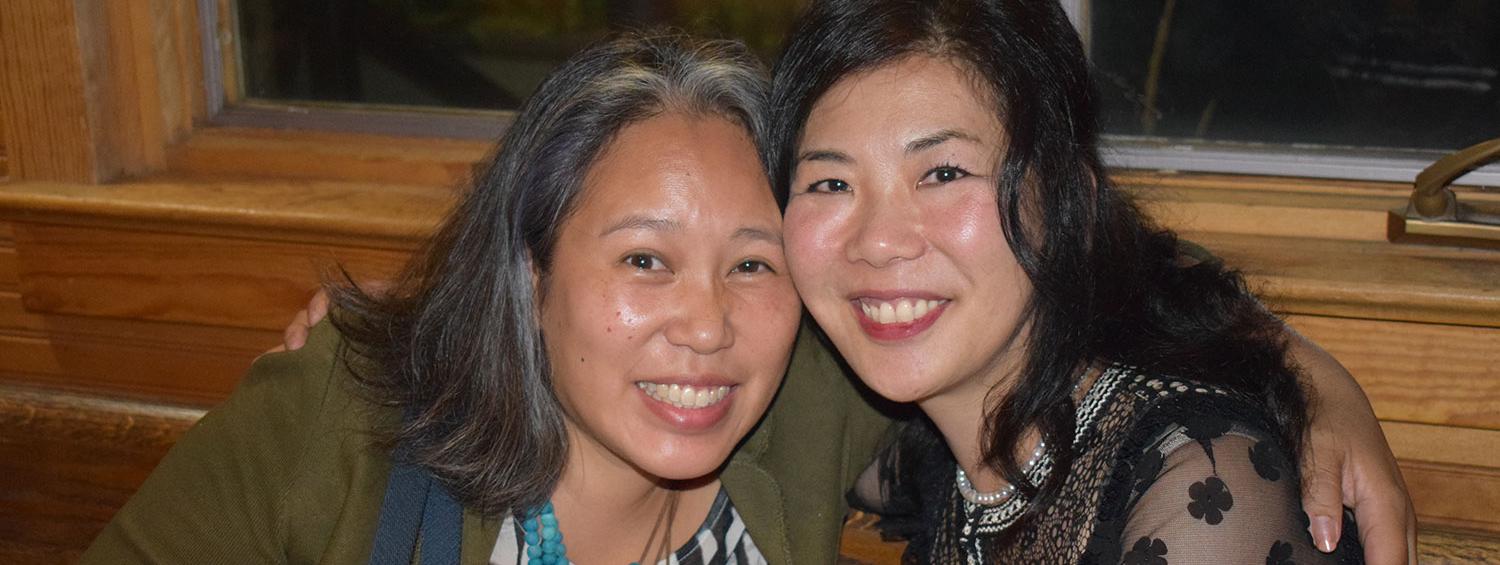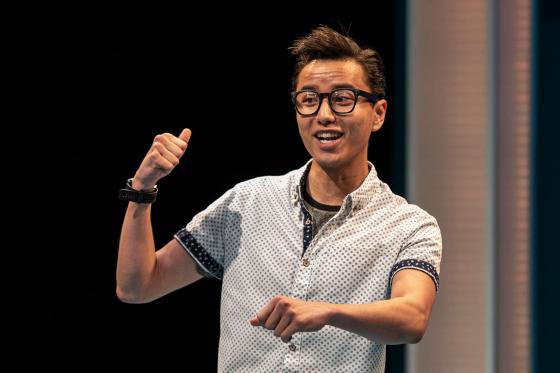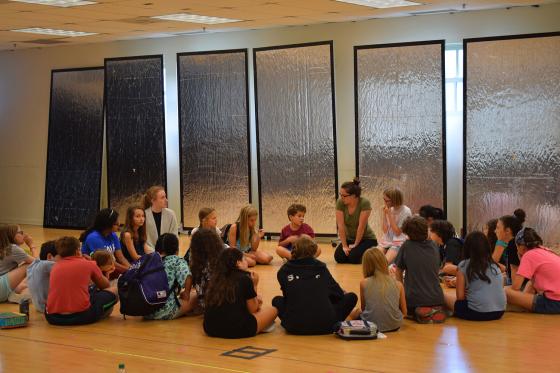We asked Debra Kim Sivigny, the costume designer for Tiger Style! to share her reactions to the show’s hilariously serious (or seriously hilarious?) take on Asian-American identity. In addition to her design work, Debra was the creator of Hello My Name Is… a seven-room living installation that invited each intimate audience to investigate their ideas of home, self, and nationality. Partly autobiographical, this piece was inspired by Deb’s experience as a Korean adoptee and her journey in 2015 to Seoul, South Korea. The production premiered at The Welders in 2017.
Serious questions stem from seeing Tiger Style!: What does “American” mean in a family’s 3rd generation in this country? When does an Asian-American just become American without a hyphen? When will random people stop assuming I’m not from here or that I don’t speak English? How many generations will it take for the stereotyping to stop? Would I be better off in China where “race isn’t a factor”?
The beauty of revisiting Tiger Style!’s version of China through the vision of Natsu Onoda Power is a joy. While I could immerse myself in the actual realities of the Shenzen Special Economic Zone (which I did spend a lot of time researching), it’s more interesting for the production to explore what that feels like through the eyes of Albert and Jennifer and their impressions of “China” as both insiders and outsiders. Their 3rd generation Chinese-American is a far cry from the “old country.” Many don’t speak Chinese and their cultural knowledge is from their parent’s stories and West coast Asian-American exposure. When the siblings feel they can’t get anywhere because of their Asian-ness and their “Tiger Parent” upbringing, they decide to go “full Western.” When that doesn’t work, they pursue their “Asian Freedom Tour”, and chaos ensues (I don’t want to spoil it.)
How fitting a story for an Asian American like me.** Like Jennifer and Albert, I did endure the hours of practicing—(clarinet in my case), private lessons, weekend orchestra and wind ensemble, concerto competitions and regional bands. There were expectations of perfect grades, good manners, showing up to things on time (read: 30 mins early), and eating everything on my plate, but never getting too fat for my mother’s critical eye.
**A quick footnote for context: My mom emigrated from Taiwan to the US in the late 1960s, born in the years of the Japanese occupation. My dad grew up in Connecticut, the son of an immigrant father from Quebec. They adopted me in the late 70s from Korea in the midst of the second wave Korean adoption boom. My name got changed from Joo Hee Kim to Debra Kim Sivigny. I grew up surrounded by a lot of white people. These are important things to keep in mind if you’ve ever assumed that any part of being Asian is monolithic as I often did as a child. With minimal exposure to Chinese culture, I had to piece it together myself.
Additionally, like them, I don’t speak Chinese. As a kid, China was a mystery to me—a land associated with mom, take out food and Amy Tan books. I even did a project on it in 3rd grade to learn more about it, but I really only remember reading about the Great Wall, the huge population and that pinyin allowed us to read Chinese in Romanized letters. In 1989, I saw the footage of the Tiananmen Square protests and the image of Tank Man will forever be etched in my mind. If my mother had opinions about the news, she kept them to herself. I began to question why a country would revolt like that? Why were the students so angry? Reading Life and Death in Shanghai by Nien Cheng was a game changer. I can’t explain why I chose to read it at age 11, but that’s how it was. I devoured every Amy Tan book, I sought out Asian authors at the Wesleyan University bookstore—anything to address my questions about “the other side of the world.” I wanted to get closer to my mom. I also probably unconsciously wanted to get closer to myself.
Every morning my father would say a toneless zài jiàn to Mom before leaving the house for work, or duì bù qǐ when he was sorry for something, but that’s the only brush with the language I ever had. Mom wanted me to assimilate—to be the “perfect American” and through successful “blending in” I would become the “best…fill in the blank.”
I reaped small stories from Mom’s time in Taiwan over the years: banging pots and pans at Chinese New Year and memories of firecrackers; tying strings to dragonfly tails for fun; chickens running around in the yard…and every so often, I would see her burn incense in the holders over the curio cabinet to honor her ancestors. I have no idea if she knew I was watching.
The mom I really knew loved Elvis, and she sang along even though she wasn’t a great singer; she was a crackerjack mahjong player and loved lottery scratch off tickets. She was stunningly beautiful in her younger years, and until I came along, she worked in a factory inspecting lace and sewing trims. I have memories of the smell of gizzards cooking on the stove, and a myriad of weird foods paraded over my plate in my childhood. When other relatives came over, there was homemade pizza and Lipton tea. This is what it meant to know my mom, and as close as I ever got to Chinese culture.
So I’m actually just left with more questions: What gets lost in a generational translation if the generation above is less interested in passing down their culture? If Americans are truly part of a melting pot, why aren’t we making more efforts towards finding common cultural ground? I have no answers, and I wonder what would happen if we stopped celebrating our individuality. What does it actually mean to be American in this day and age?
Box Office: 301.924.3400
Open Wednesday - Sunday: 12:00 PM - 6:00 PM






